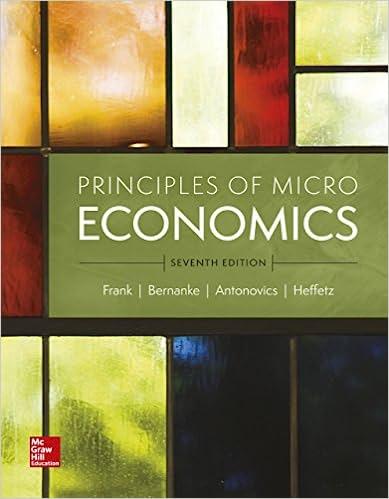Question
Paper Prospectus The policy question of whether rent controls are effective in stabilizing rents and increasing the supply of housing in the Twin Cities is

Paper Prospectus
The policy question of whether rent controls are effective in stabilizing rents and increasing the supply of housing in the Twin Cities is an important policy question that needs to be addressed. The Twin Cities, specifically St. Paul and Minneapolis, have been facing a significant housing crisis in recent years. The rising cost of housing has put a strain on low and middle-income families, making it difficult for them to find affordable housing options.
To address this problem, the city of St. Paul has enacted a rent control policy, while Minneapolis has yet to implement similar measures. Rent control policies aim to regulate the amount that landlords can charge tenants for rent and are a commonly used method of addressing housing affordability. However, the effectiveness of these policies has been widely debated.
To better understand the issue, I have conducted a review of several sources, including newspaper articles, studies, and reports. One study conducted by the National Bureau of Economic Research (NBER) found that rent control policies have a negative impact on the supply of housing, leading to decreased investment in the rental market and a reduction in the number of rental units available.
On the other hand, a report from the Metropolitan Council found that rent control policies have been successful in stabilizing rents and increasing the affordability of housing in other cities across the country. This report also highlighted the importance of tax credits and housing vouchers in addressing the housing crisis in the Twin Cities.
The effectiveness of rent control policies in stabilizing rents and increasing the supply of housing in the Twin Cities is a critical policy question that requires further examination. The conflicting findings from different sources highlight the need for a comprehensive analysis of the impact of rent control policies in the Twin Cities. This paper will provide a thorough examination of the issue, including a comparison of the rent control policies in St. Paul and Minneapolis, and the effectiveness of tax credits and housing vouchers in addressing the housing crisis in the Twin Cities.
economic model
The amount of rent that landlords can charge renters is regulated by rent control laws, which may have an impact on the availability of rental homes. According to economic theory, rent control measures can have both good and negative effects. Positively, rent control laws can make housing more affordable for low-income families by bringing down rent prices. For those households, this may result in more economic stability and mobility. In locations where housing costs are growing, rent control laws may also help to prevent the eviction of low-income households.
Rent control laws may lessen landlords' incentives to improve or invest in their rental properties, which is a drawback. Additionally, landlords might decide to turn their rental houses into condos or offices, which might further restrict the supply of rental property. In addition, discrimination against low-income households and longer rental waitlists may result from rent control legislation. The economic model is built on the ideas of microeconomics, a field that researches how individual agentssuch as consumers and businessesbehave and interact in marketplaces. In this instance, the emphasis is on the rental housing market and how rent control laws affect the number of available rental units and the equilibrium rental price.
The supply and demand theories, which are two fundamental forces influencing market prices and quantities, are used in the model. The link between the cost of an item or service and the volume that producers are prepared to supply is represented by the supply curve. The supply curve's slope reveals how responsive producers are to changes in price. The supply curve in the context of rental housing represents the number of rentals that landlords are prepared to offer at various rental rates.The relationship between the cost of a commodity or service and the volume that customers are prepared to buy is represented by the demand curve. The demand curve's slope reveals how responsive consumers are to price fluctuations. The quantity of rental units that renters are prepared to rent at various rental prices is represented by the demand curve in the context of rental housing.
A microeconomic model can be created to better understand how rent control laws affect housing availability. Let q and p stand for the number of available rental units and the monthly rent, respectively. Rental unit supply curve S can be expressed as S(p) = Q - bp, where Q is the overall number of units available and b represents the supply curve's slope. Renter demand, denoted by the letter D, can be expressed mathematically as D(p) = Q - ap, where a denotes the slope of the

Step by Step Solution
There are 3 Steps involved in it
Step: 1

Get Instant Access to Expert-Tailored Solutions
See step-by-step solutions with expert insights and AI powered tools for academic success
Step: 2

Step: 3

Ace Your Homework with AI
Get the answers you need in no time with our AI-driven, step-by-step assistance
Get Started


